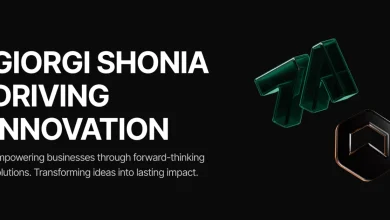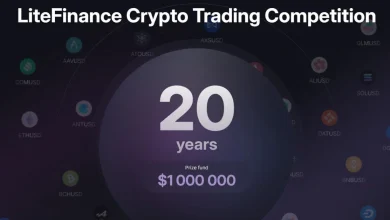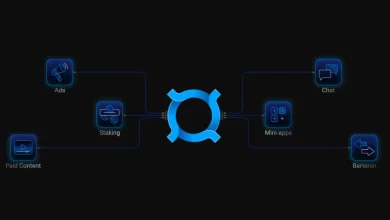Hydra is an ambitious layer 1 blockchain protocol that aims to create an optimal environment for decentralized projects to thrive. By positioning itself as a hub for innovation and liquidity in crypto, Hydra seeks to establish itself at the core of the industry.
The upcoming HydraGon protocol upgrade embodies Hydra’s ethos of trailblazing technology that solves key blockchain challenges. According to the Hydra team, HydraGon can enable blazing fast throughput without compromising decentralization or security. If successfully implemented, this could establish Hydra as a leading blockchain for demanding decentralized apps and use cases.
Tackling the Blockchain Trilemma
A core aim of HydraGon is helping resolve the “blockchain trilemma” – the difficulty balancing scalability, decentralization and security. This trilemma represents one of blockchain’s most pressing obstacles hindering mainstream adoption.
Through its game theory-powered HydraGon engine, Hydra claims this upgrade can deliver high transaction throughput without sacrificing decentralization or security. The HydraGon engine combines adopted blockchain features with a novel approach utilizing incentive mechanisms.
Specifically, the Hydra team states that HydraGon could allow upwards of 4,000 transactions per second initially. This is a major improvement over highly congested alternatives like Ethereum. The upcoming Prometheus scaling solution is also intended to enable near infinite future scalability on layer 1.
By solving common blockchain scaling bottlenecks, Hydra is ambitiously positioning itself as a high-performance chain ready to take on more demanding use cases. Of course, these claims remain to be proven once HydraGon goes live.
Designed for Speed and Scale
According to Hydra, the HydraGon upgrade will maintain a permissionless architecture allowing anyone to run network nodes. At the same time, the transition to a Delegated Proof-of-Stake model aims to optimize consensus for speed, security and decentralization.
The team proposes that combining DPoS with reputation systems, punishment mechanisms, and stake-weighted voting can achieve the ideal balance. This showcases Hydra’s focus on innovation to unlock performance and scalability that exceeds legacy chains.
HydraGon will also introduce interchain communication between Hydra and external blockchains like Ethereum. This interoperability enables transfer of data and assets across protocols.
Together with the scalability upgrades, these features are designed to make Hydra highly appealing for builders of high-volume Web3 applications. By providing a fast, low-cost environment, Hydra aims to incentivize developers to deploy dApps on its chain.
Empowering the Decentralized Economy
Beyond its technical capabilities, Hydra positions itself as a blockchain focused on economic innovations and features. For example, the LYDRA liquid staking token unlocks opportunities like leveraged yields and instant borrowing against staked HYDRA.
Additionally, protocol-owned yield products are in development to allow stablecoin holders to earn leveraged returns on deposits through Hydra’s DeFi ecosystem. These economic mechanisms aim to provide advantages complementing the layer 1’s speed and efficiency.
DAO-based on-chain governance is also planned, enabling decentralized control of the ecosystem’s future direction. This on-chain governance will be funded through a sustainable treasury that can make strategic investments benefiting the protocol and community.
Together with the HydraGon enhancements, features like these provide a compelling value proposition for decentralized apps choosing to build on Hydra’s architecture.
Major Progress and Adoption
Hydra is still a young project, having launched in late 2020. But the team of experienced blockchain developers has made major strides, as highlighted by a rapidly growing list of partnerships.
Major exchange KuCoin operates a large Hydra staking pool, while Gate.io, BitMart and MEXC have also integrated HYDRA support and liquidity. Institutional investors like Webjet and established crypto projects building on Hydra further validate its long-term potential.
The protocol now looks to leverage the HydraGon launch as a catalyst for accelerated adoption growth. By delivering a high-speed chain ready for the most demanding Web3 use cases, Hydra aims to attract additional partners, developers, and community involvement.
Realizing the Grand Vision
Hydra maintains ambitious aspirations – aiming to become a top 10 or even top 5 blockchain protocol over the long term. The community points to the HydraGon upgrade as a foundation for realizing this vision.
If HydraGon can deliver on its promises of high throughput and scalability without decentralization tradeoffs, it would firmly establish Hydra as an industry leader. Additional upgrades like Prometheus and a robust economic layer could create a next-generation blockchain environment ready for global adoption.
Of course, Hydra still has much left to prove as a young project. But the team’s commitment to pioneering technology combined with a thoughtful economic layer provides reasons for optimism. The wider cryptosphere will be closely monitoring Hydra’s evolution in the years ahead.
Conclusion
HydraGon represents a milestone in Hydra’s roadmap as it looks to establish itself among elite blockchain protocols. By combining scaling and performance with a commitment to full decentralization, Hydra aims to create the ideal conditions for dApps and DeFi to thrive.
The project’s community remains hard at work delivering on this vision. While challenges inevitably lie ahead, Hydra is positioning itself at the bleeding edge of blockchain innovation. If the team can execute on this promise, Hydra could emerge as a key player in the foundations supporting mainstream decentralized technology adoption.
Disclaimer and Risk Warning
The guest posts featured on Coinpedia are contributed by external authors and reflect their personal opinions and viewpoints. Coinpedia does not endorse, verify, or take responsibility for the accuracy, legality, or reliability of the content, advice, or opinions expressed in these guest posts. Including guest posts does not imply Coinpedia's approval of the content or the author’s views. Readers are encouraged to independently evaluate the information and seek professional advice if necessary before acting on any information provided in the guest posts.







